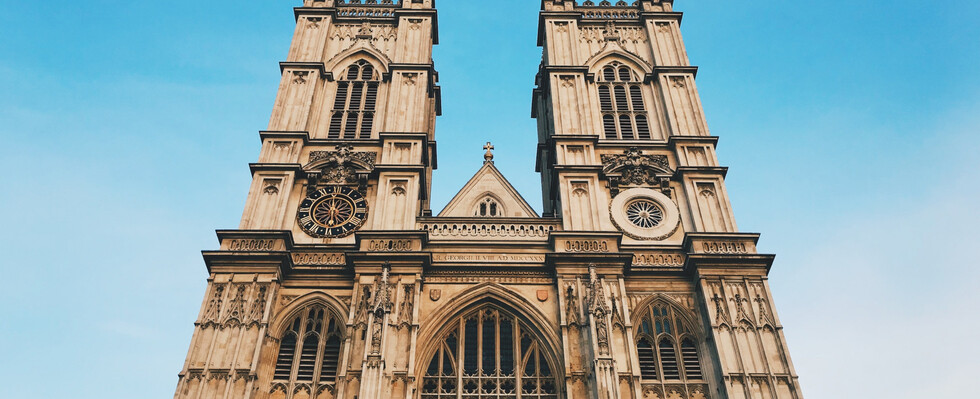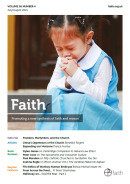Book Review: Fifty Catholic Churches to See Before You Die
Our beautiful churches
Review by Paul Marsden
Cardinal Basil Hume once said, “Churches are not just places inwhich we worship God but with which we worship God.” This book bears testimony to the huge importance of both sacred space and beauty in our worship, and is, as well as being a guidebook, an account of our Catholic history in this country. It will lift the spirits of any Catholic reader and will surprise most at the richness of our heritage. Fifty Churches shows that Catholic churches are among the great architectural and decorative treasures of England and Wales, but we know they are largely unknown, underappreciated and unvisited. This book puts that right. This practical guide is meant for making visits and caters to the growing popularity of church tourism. But the author gives a warning: visits require careful planning. Some churches are locked outside of Mass times for reasons of security. Curti advises telephoning ahead to check opening times: the website may be out of date, or there may be a funeral.
Lost heritage
Elena Curti was born in Italy, educated in England and trained as a journalist, being Deputy Editor of The Tablet for a number of years. More recently she has specialised in writing about Catholic heritage and conservation, and in Fifty Churches she shows a knowledge of, and enthusiasm for, her subject which is utterly infectious. The tone of the writing is one of respect and affection and shows that, at least compared with half a century ago, we are today more respectful of tastes and fashions that are different from our own. Curti deals with this issue in the excellent Introduction. She discusses the impact of the “noble simplicity” set out in the Second Vatican Council and how this influenced not only new buildings but also how much of our heritage was regarded. As she says, “rood screens, altar rails, high altars and their, often elaborate, stone-carved reredoses, were ripped out and destroyed. To visit historic Catholic churches is to learn how much was lost in this way.” Notwithstanding, five of the fifty churches she has selected are from the 1960’s and represent good examples of the new approach to the ordering of churches and their decoration.
Faith and generosity
Each church selected has an entry of either four or six pages with superb quality photographs. (The photos are without caption, and perhaps, in a future edition, consideration could be given to including some.) The history of the building is invariably interesting and frequently tells edifying tales of faith and generosity, whether it be the largess of the nobility or the pennies (and, in some cases, the labour) of the Irish poor. Curti’s highly scholarly and well-researched detail will satisfy the most demanding architectural and decorative enthusiast, but there will probably be too much detail for some readers who may be tempted to skip bits, perhaps having tired of constant referrals to the glossary at the back. Fifty Churches is immensely practical, giving the address and phone number of the church, together with a “Visit Also” paragraph which gives mention of other churches (or other things of interest to Catholics) in the vicinity. The entries are up-to-the-minute, including the sad news that the Benedictines are moving out of Downside.
Problems and developments
The author addresses some difficult facts. Changing demographics were behind the foundation of many of these churches (not least Irish immigration into largely urban areas), and are now part of the problem (together with falling rates of Mass attendance). Churches are closing, while others (especially nineteenth century ones) are in need of unaffordable repairs. But there are many positive developments. St Francis Xavier in Liverpool (built in 1848), which once had a Catholic population of 13,000, was facing closure by 1981, as the population had moved away. Now its sumptuous interior has been beautifully restored and the church is supported by a group of Friends who act as welcomers and guides. Ushaw College chapel is another encouraging example of resurrection from severe decay. And some endangered churches have been successfully put into new (and loving) hands: the Institute of Christ the King has acquired two redundant churches – St. Walburge, Preston, and another on the Wirral – while the Syro-Malabar Catholics are now established at
St. Ignatius, Preston.
Historical context
After the entries on each of the fifty selected churches, there are three appendices which are thorough and well-researched. The first covers the life and work of no less than thirty of the most important church artists and architects, placing them in their historical context. Indeed, the historical context of these churches is one of this book’s strongest points. This is followed by a glossary not only of definitions of architectural and decorative features, but also matters pertaining to Catholic history and devotion which might not be known to those outside the household of the faith, itself an indication that this book is expected to be of interest beyond Catholic circles. Lastly, there is a short Bibliography and some useful Websites.
For the glove-compartment
Inevitably, this book will be compared with A Glimpse of Heaven by Christopher Martin, published in 2006 as a collaboration between English Heritage and the Patrimony Committee of the Catholic Bishops’ Conference of England and Wales. This latter book also covers cathedrals, which Fifty Churches does not. In some cases the photos are actually the same, by the distinguished architectural photographer Alex Ramsay. Both books are warmly recommended, but I see them in different places. A Glimpse, hardback with double the page-size of Fifty Churches and luxuriously produced, is like a solemn hymn of thanksgiving for our glorious heritage that would grace any coffee-table in the most elegant surroundings. Fifty Churches, once read through perhaps twice, I see residing in the glove-compartment of the car, next to the road atlas. (That probably dates me – I should have said the sat nav.) Now let us all pray that these beautiful buildings may be filled with worshippers.
Paul Marsden is a retired banker and a Trustee of Aid to the Church in Need (UK).






